Sea fishing hook sizes
Matching the right hook size to the size of the bait and the species of fish you are targeting is important. Note that hook sizes are not standardised between hook types, although they are quite similar. A reference point asides from my hand is that most mackerel feathers come with size 1/0 hooks.
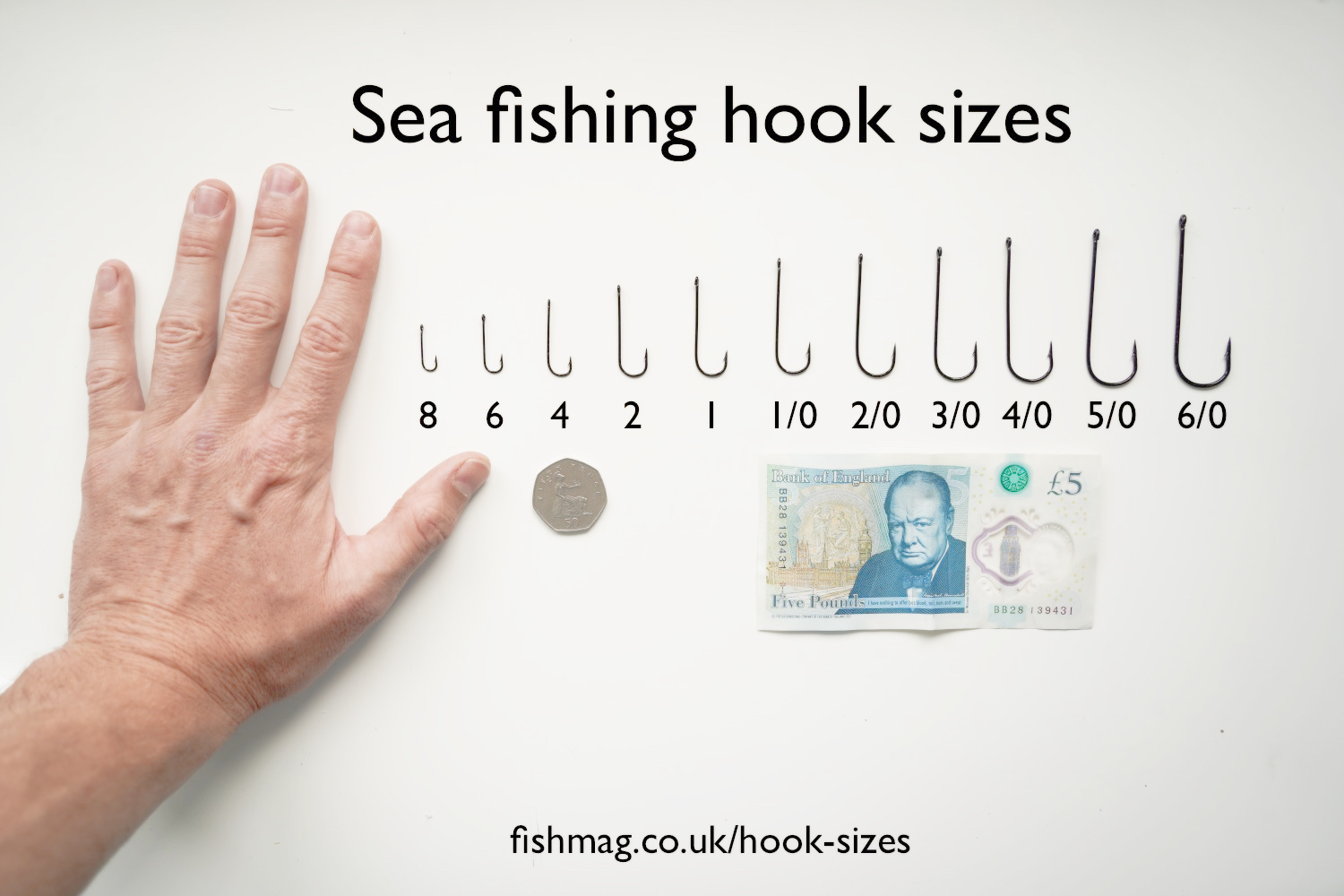


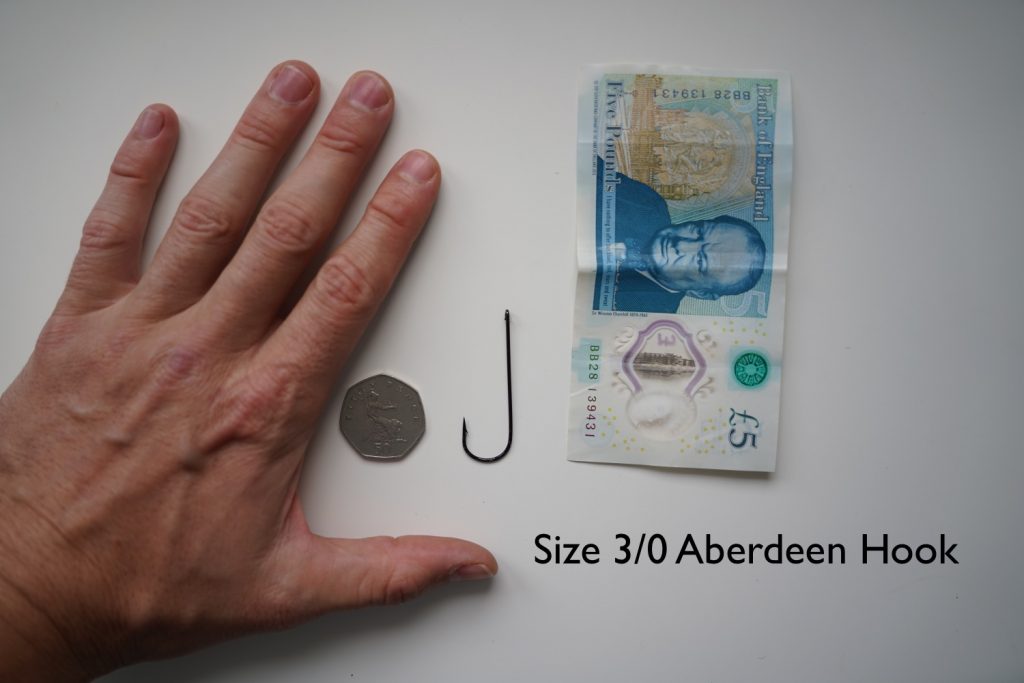
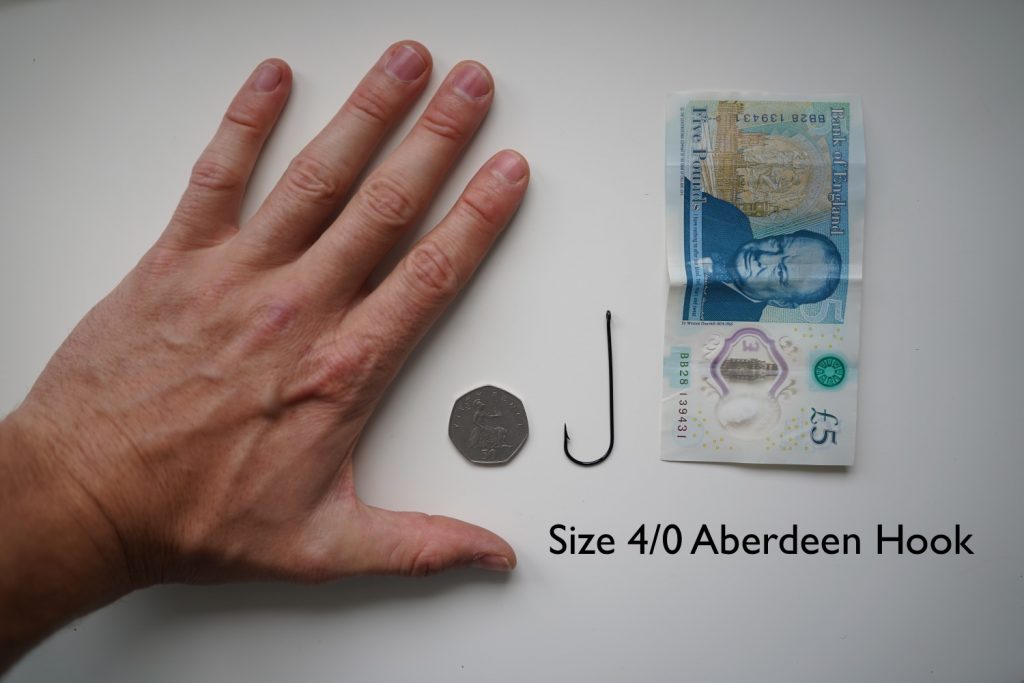
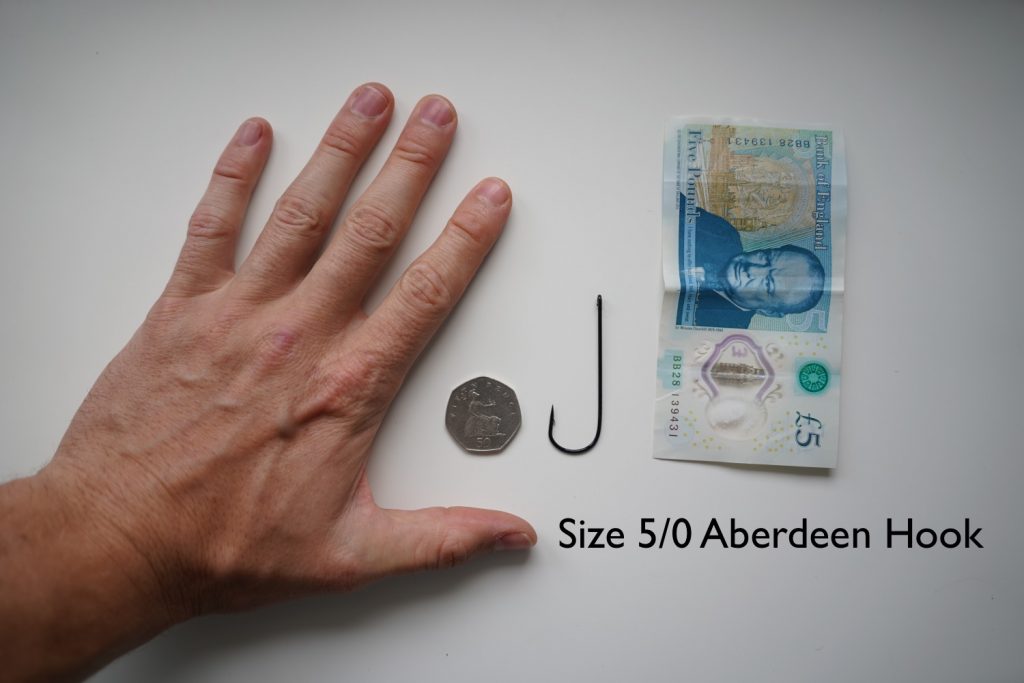
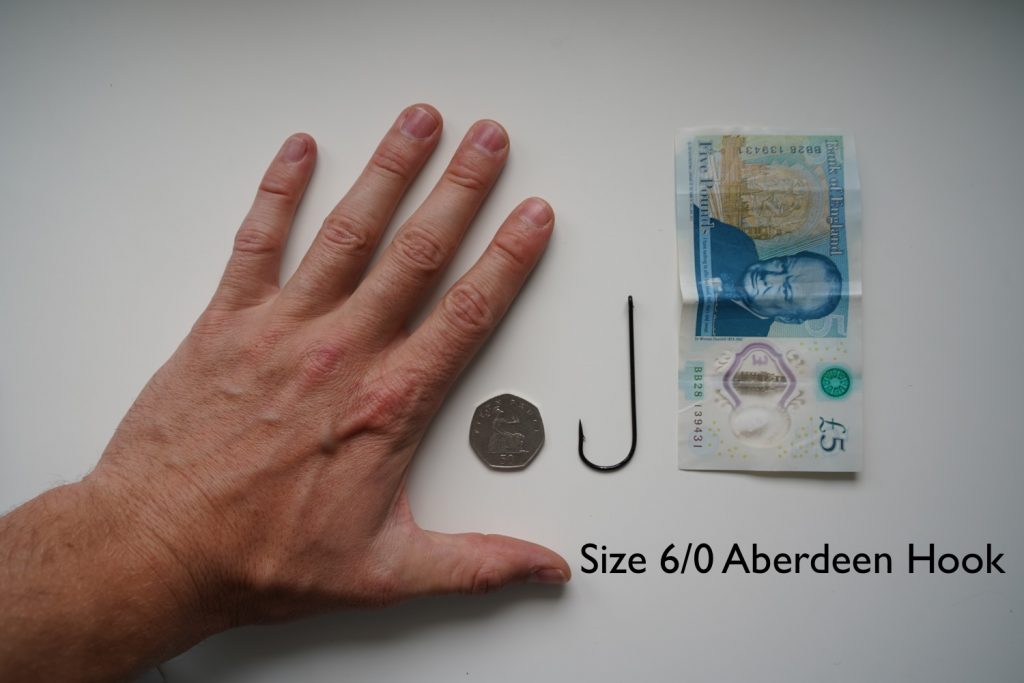
We also have a full guide on the best types of sea fishing hooks for UK anglers.
What size hook for X species?
When choosing a hook size, it is important to match it to the size of the bait and the species of fish you are targeting. However, there is quite a wide range of sizes that will work for each species. It’s likely that your bait or the exact size of the fish in the area will determine the hook size you choose.
- Size 4, 6, & 8: Suitable for small species with tiny mouths like mullet, sole, bream, and garfish.
- Size 2, 1, 1/0: The standard sizes for shore fishing for the smaller common species like dogfish, wrasse, pouting, whiting, codling, dabs, flounders, and plaice. Size 1/0 is a highly versatile hook size that will catch most British fish species.
- Size 1/0, 2/0, and 3/0: The choice for species like cod, bass, pollack, rays, and smoothhounds.
- Size 4/0, 5/0, 6/0: Used for the biggest species like conger eels, big cod or bass, and for use with very large baits like whole squid and mackerel.
- Size 6/0 and above: Used for sharks and conger.
How hook sizes work
Smaller hooks are sized from 24 to 1. The size 24 hook would be the smallest, and the size 1 the largest. After size 1, a zero starts getting added to the end. So, the next largest hook after a size 1 is a size 1/0. Then the next largest after that is a size 2/0.
For example, a size 22 hook is very small and a size 12/0 hook is huge. It’s a little confusing because when there is no ‘0’ on the end, the higher the number the smaller the hook, whereas when there is an ‘0’ on the end, higher numbers mean larger hooks. It is important to note that there is no benchmark for the different sizes of hooks, so a size 2 fishing hook from one manufacturer could differ from another.
When purchasing hooks, if you come across hooks that are numbered and followed by an “x”, it means the length of the shaft is short or longer than the standard measurement. For example, a “6 2x Short” denotes a #6 hook which has a shaft the length of a hook two sizes smaller, while a “6 2x Long” has a shaft the length of a hook two sizes bigger.
Using the correct hook size makes the difference between catching fish and catching nothing. Using a hook that is too large will result in missed bites as a fish will be unable to fit the hook into their mouths. Using a hook that’s too small a hook will result in bites being missed as striking will not see the hook point driven into the fish’s mouth. The hook may also bend, snap, or otherwise fail if it is not big and strong enough to handle a large fish. Using hooks that are too small can also result in fish becoming gut-hooked, meaning the fish takes the hook right down into its stomach and invariably leads to killing the fish to remove the hook. Gut hooking is the one of the main reasons anglers increase their hook size when targeting bigger fish. Smaller hooks get out of snags more easily and allow you to catch whatever is there on tougher days.
One last reminder – here are hook sizes 1/0 to 6/0 before you go…


